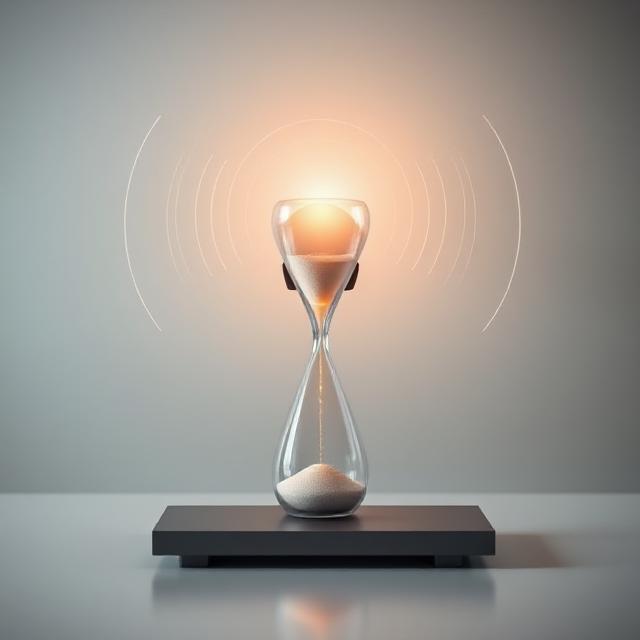
Table of Contents
Microflow: Short Bursts of High Focus in Your Day
TL;DR
Microflow is a miniaturized version of the flow state: intense, focused attention that lasts for 10 to 40 minutes—long enough to complete meaningful work, but short enough to avoid fatigue. When mastered, it can help you build momentum, stay creative, and get more done without mental drain.
What Is Microflow?
Most people have heard of flow—that immersive state where time disappears and you’re completely absorbed in what you’re doing. But what if you could enter a compressed version of flow, multiple times throughout your day?
That’s microflow:
- Brief, repeatable deep focus windows
- No need for long ramp-up time
- High engagement, clear goals, instant feedback
Unlike traditional flow that may take 15–30 minutes to “enter” and hours to sustain, microflow emerges faster and is designed for modern attention spans.
The Neuroscience Behind It
Microflow taps into the same brain mechanisms as full flow, just at a lower intensity and shorter duration.
Key Components:
- High dopamine: fuels motivation and reward
- Elevated norepinephrine: sharpens focus and alertness
- Low prefrontal activity: reduces self-consciousness and inner chatter
- Synchronized alpha-beta activity: allows for focused creativity
- Transient gamma bursts: mark insights or problem-solving
This neurochemical cocktail helps you lock in, stay on task, and finish strong—without needing hours of uninterrupted time.
What Makes Microflow Work?
You don’t fall into microflow by accident—it’s engineered through structure, triggers, and timing.
1. Clear Goal + Immediate Feedback
- Write a blog paragraph, sketch a diagram, fix a bug
- You know when it’s working—feedback is built-in
2. Tight Time Constraint
- 10–40 minutes—set a timer
- The urgency creates focus, not stress
3. Low Distraction Zone
- Close tabs, silence phone, turn off notifications
- Block the outside world, even briefly
4. Mild Challenge
- Too easy = boredom
- Too hard = frustration
- Just right = full immersion
Microflow vs Traditional Flow
| Feature | Microflow | Classic Flow |
|---|---|---|
| Duration | 10–40 minutes | 2–4 hours |
| Setup Time | 1–5 minutes | 15–30 minutes |
| Energy Cost | Low to moderate | High |
| Frequency | 3–6x/day possible | 1–2x/week |
| Applications | Daily tasks, writing, problem-solving | Sports, coding marathons, composing |
| Best For | Busy professionals, creatives | Athletes, artists, deep thinkers |
How to Trigger Microflow: Step-by-Step
- Pick a small, specific task
- “Summarize this study in 3 bullet points”
- “Edit one paragraph”
- “Outline 3 titles for a blog post”
- Set a timer (15, 25, or 40 minutes)
- Use tools like Pomofocus.io, Forest, or a minimalist stopwatch
- Don’t extend the session even if you’re “in the zone”
- Enter a ‘pre-focus ritual’
- One deep breath
- Quick stretch
- Sip water
- Close all apps or tabs except the task
- Allow no input
- No music with lyrics
- No notifications
- Headphones or white noise can help block environmental distractions
- End and reward
- Stand up
- Do a light movement or breathe
- Track your wins—this builds dopamine reinforcement
When to Use Microflow in Your Day
| Time | Best Use |
|---|---|
| Morning (8–11am) | Analytical focus, writing, strategy |
| Midday (1–3pm) | Execution tasks, small projects |
| Late afternoon | Creative work, brainstorming |
| Evening | Low-stakes reflection, journaling |
Align your cognitive rhythm with your circadian peaks—most people have 2 or 3 natural windows of elevated alertness.
Common Mistakes to Avoid
- Overstacking sessions: Doing six microflow blocks back-to-back burns you out.
→ Solution: Alternate with movement, sunlight, or low-effort admin work. - Trying to multitask inside flow: Microflow is all-or-nothing.
→ Solution: Commit to one narrow task per block. - Skipping the ritual: Even 10 seconds of ritual anchors your brain.
→ Solution: Make a personal “entry” habit.
Tools That Enhance Microflow
- Timeboxing apps: Motion, Sunsama
- Distraction blockers: Cold Turkey, Freedom, LeechBlock
- Noise management: Brain.fm, brown noise loops, binaural beats
- EEG headbands: Muse or FocusCalm can help confirm you’re in the zone
- Micro-journals: Track how long it took to enter flow + how you felt
Microflow and the Brainwave Connection
During microflow, brainwaves shift dynamically:
- Start in low beta (alert)
- Slide into high alpha / low beta mix (relaxed focus)
- Occasionally spike gamma (insight)
With training, the entry into this rhythm becomes almost automatic—a well-grooved neural circuit you can activate on demand.
Final Thoughts: Reclaim the Hidden Minutes
You don’t need hours of silence to do meaningful work.
You need structure, intention, and short windows of deep engagement. Microflow is about reclaiming quality over quantity, training your mind to snap into clarity and exit cleanly—again and again.
“Discipline equals freedom. Especially in time.”
—Jocko Willink
